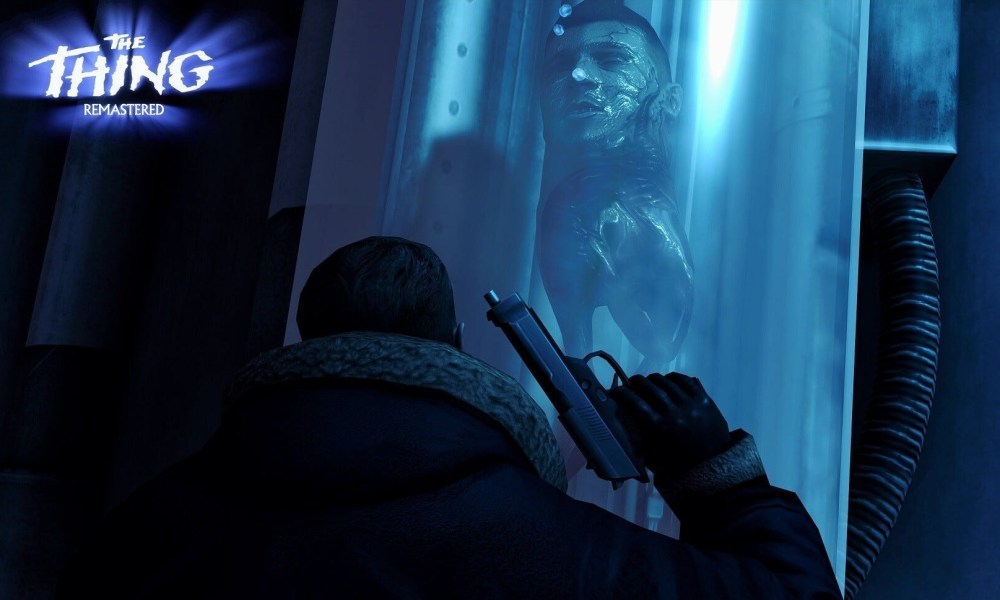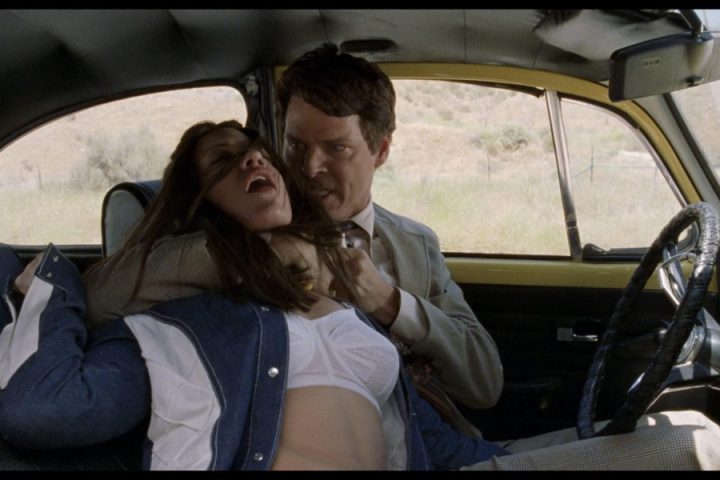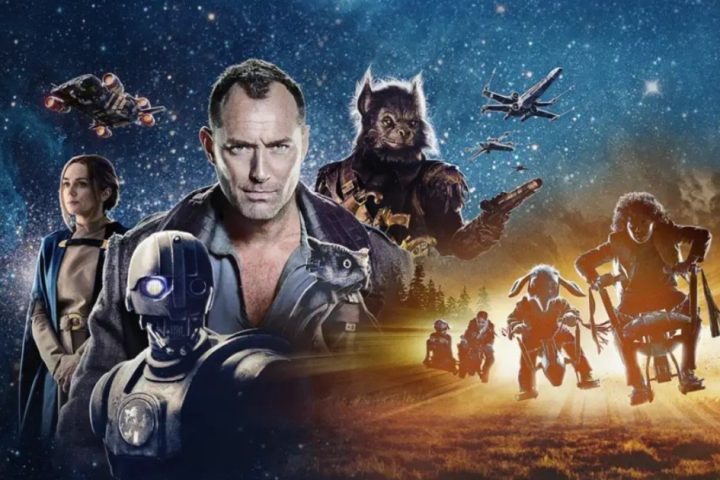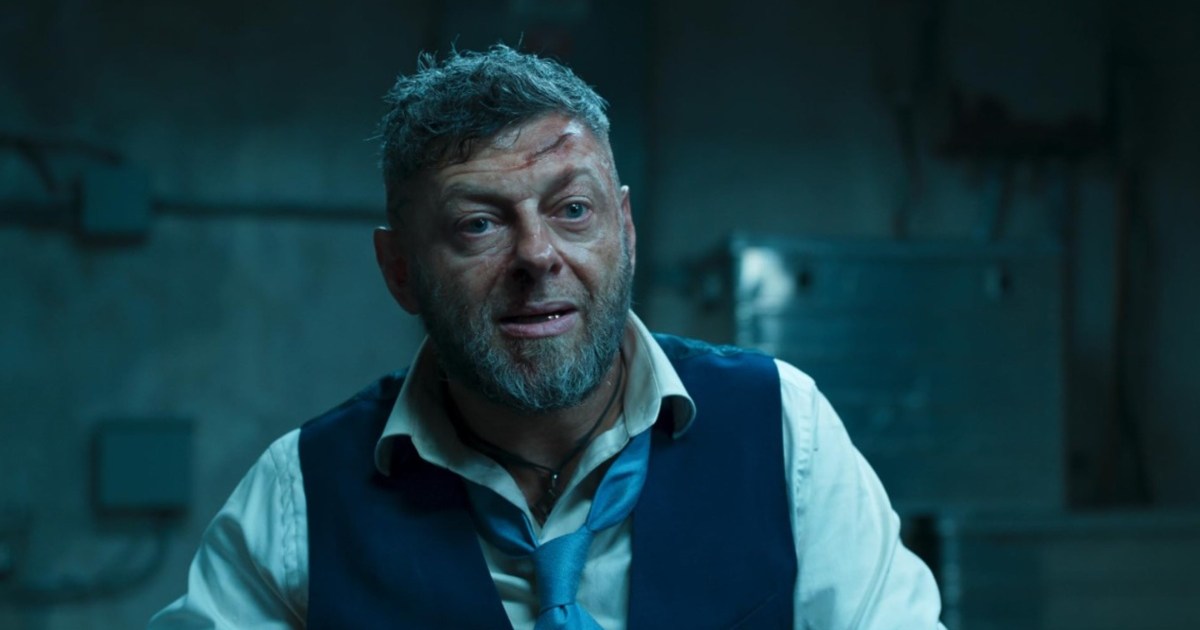Over the past decade, the gaming industry has developed a rather rigid formula for titles based on popular horror films. Whether it’s a revered classic like The Texas Chain Saw Massacre, a cult B-movie like Killer Klowns From Outer Space, or even the straight-to-video Puppet Master series, it seems that the go-to model for these adaptations is asymmetrical multiplayer.
At its best, as seen in Friday the 13th, this approach can brilliantly bring the source material to life. However, at times, it can feel restrictive, forcing unique IPs to lose their distinctiveness in order to fit into a trend that’s at risk of becoming stale.
This is particularly evident when iconic horror characters are shoehorned into the Dead by Daylight universe. In these instances, their unique traits are stripped away to fit the game’s blueprint of what a Killer should be. For example, “The Nightmare” may wear Freddy Kruger’s iconic sweater and fedora, but he lacks the Springwood Slasher’s core appeal. His dream powers are underutilized, his creative kills are absent, and he’s ultimately reduced to just an ordinary guy, clumsily navigating the map and attacking people with his once-fearsome glove.
The same applies to DbD’s Pinhead and Michael Myers, who uncharacteristically surrender their unique traits to fit into the game’s formula. What’s frustrating is that all these legendary villains, from Pyramid Head to Ghostface, Sadako, and even the Demogorgon, are forced to follow the same, homogenized modus operandi. They can’t be themselves because they have to be Dead by Daylight killers first, which means keeping survivors alive on hooks until they slowly bleed out.
While DbD is a prime example of this trend, it’s not the only one. There are numerous instances where unique horror films have lost their identities to the asymmetrical craze, such as Predator: Hunting Grounds or Evil Dead: The Game. It’s no wonder that many horror fans are growing weary of seeing their favorite franchises adapted in this way. It’s become overdone and feels like a lack of creativity.
Imagine if a developer were given The Thing licence in 2024, they’d likely be forced to create a cheap Among Us knockoff, complete with repetitive social deduction mechanics, mundane co-op objectives, and uninspired combat. It’s almost unthinkable that we’d get a well-crafted, decently budgeted single-player experience out of it.
However, 2002 was a different era. Back then, the AAA industry encouraged experimentation, and not everything had to be a safe bet. Plus, the asymmetrical trend was still over a decade away from dominating the horror landscape like a malevolent alien shapeshifter assimilating everything in its path.
So, when Computer Artworks were given the opportunity to adapt John Carpenter’s iconic creature feature at the turn of the millennium, there was no risk of them producing another generic 1v4 multiplayer game. Instead, they made the inspired choice to create a tactical squad-based shooter that perfectly captured the tense paranoia, oppressive setting, and grotesque imagery of the 1982 masterpiece it was based on.
While the end result wasn’t perfect and had some technical flaws that were hard to overlook, it felt like it was made by people who truly understood and loved The Thing. And that made a big difference back in 2002. And it still does today!
A Flawless Replication Of A Cult Classic
Whether you’re a newcomer to Computer Artworks’ gem or a nostalgic fan longing to revisit its low-res Antarctic vistas, now is the perfect time to dive in. Nightdive Studios have given it their signature remastering treatment, and the result is a stunning facelift that’s immediately noticeable in side-by-side comparisons.
Unlike other remasters that can feel like glorified ports, this one is the epitome of a remaster. Everything from the character models to the textures, animations, lighting effects, and atmospherics have been completely rebuilt in Nightdive’s proprietary KEX engine. Plus, the dedicated preservationists at Nightdive have ensured that The Thing: Remastered runs smoothly in 4K and at up to 120 FPS on current-gen devices, giving it a fresh lease of life.
However, despite the impressive visual overhaul, it’s important to note that this is still the same game at its core. Much like art restorers who meticulously restore centuries-old masterpieces, or Martin Scorsese painstakingly restoring a decaying film reel, Nightdive puts a lot of care and effort into resurrecting lost titles as they were. They see themselves as custodians of gaming history, aiming to preserve rather than alter the original artistic vision.
Staying true to their ethos, Nightdive’s remaster of The Thing is incredibly faithful to the original. It maintains the old enemy and item placements, keeps the same quirky voice acting, and only makes the smallest tweaks to the mechanics. They’ve even resisted the urge to surprise veteran players by changing the identity of the titular extraterrestrial changeling (although they have subtly altered how the infection system works). So, if you’re familiar with the 2002 original, don’t expect any major changes here.
Who Goes There?
Fortunately, this faithful adherence to the past isn’t an issue because, aside from a few minor quirks, Computer Artworks’ shooter still holds up remarkably well.
For those unfamiliar with the game, you play as Captain J.F. Blake, the leader of an elite special forces unit sent to Outpost 31 to investigate the aftermath of the events in the John Carpenter film. Having seen the movie, we’re a bit more clued up on the rnrn
Our avatar may be in a dire situation, but it doesn’t take him long to draw his own conclusions. In short, everything has gone horribly wrong!
Even a quick investigation reveals that a hostile organism infiltrated the compound, picking off researchers one by one, and turning the remaining survivors against each other. Judging by the destroyed remains of the base, it’s safe to assume that the men took drastic action by blowing the place to smithereens when they realized they were losing control. That’s the condensed version of the story, but it’s enough for Blake to work with.
After thoroughly investigating the crime scene, you’re sent on a series of missions (around 20 in total) that take you to other memorable locations from the movie — including the Norwegian camp and the icy tunnels beneath it — as well as some never-before-seen environments that expand upon the lore in intriguing ways. However, getting from point A to point B is easier said than done. You’ll have to contend with freezing temperatures, the shifting loyalties and fragile psyches of your squad mates, a shadowy faction with ulterior motives involving the alien, and of course, the pesky shapeshifter itself, which could be hiding in plain sight at any moment.
“Trust’s A Tough Thing To Come By These Days”
For die-hard fans of The Thing like myself, this 7-8 hour campaign manages to pull off the delicate balancing act of following up one of the greatest horror films ever made, while also taking the IP in a fresh direction.
The first half is particularly satisfying, as you embark on a virtual tour of the movie’s iconic sets. Whether it’s the ice block room where the madness began for MacReady and his team, the dog kennels where everything truly spiraled out of control, or the subterranean lair where the Blair-thing is discovered building its makeshift UFO; these environments have been recreated in meticulous detail. It’s clear that someone on the development team spent months obsessively studying behind-the-scenes stills and reference photos to ensure everything matched up seamlessly with the film’s continuity, and that every last detail of the production design was accounted for. If you look closely, you can even find the axe lodged in a door at the Norwegian camp.
There’s plenty of fan service here. The memorable fire-alarm klaxon makes an appearance, you can find R.J.’s “We’re all very tired” tape, and you can even uncover the canonical fate of Childs as a cool Easter Egg.
But the game’s connection to the Carpenter film goes beyond mere callbacks and nods. It truly understands its unique source material — and what has made it such a lasting hit — in a way that many contemporary horror adaptations fail to grasp.
This is largely due to the clever choice of genre. The squad shooter dynamic pairs perfectly with this license and fits the story like a glove. After all, turning a movie about paranoia and distrust into a stressful team-building exercise is a stroke of genius on the developers’ part.
The twist here is that you have to manage not only your companions’ battle tactics (as you would in Ghost Recon or Operation Flashpoint) but also their rapidly deteriorating mental states. Your team may be prepared for the harsh realities of war and military black ops, but what they find in Outpost 31 is something else entirely. And they soon start to crack under the pressure.
You’ll have to monitor each squad member’s anxiety levels, help them stay warm in the freezing climate, boost morale, and generally try to inspire faith in your leadership. If they begin to doubt your capabilities for even a second — or worse, question your identity — they will turn on you.
This twist on the squad shooter genre adds a lot of tension. On one hand, these colleagues are very useful in a tight spot and you want to keep them on your side (otherwise you’ll be left without a medic to heal your wounds, a gunman to watch your back, or an engineer to unlock critical doors). But on the other hand, they can be real liabilities when they lose their cool, prone to hysterical breakdowns, panicked bursts of friendly fire, and sudden acts of betrayal. Blake might need to start vetting his recruits more thoroughly!
As for the precautions you can take to keep things cordial, managing your squad’s finite resources is key. For instance, providing buddies with ammo can calm their nerves, but it leaves you short, so you have to strike a balance. You also have a limited supply of adrenaline shots that can (somewhat counterintuitively) be used to soothe trigger-happy marines, and willingly handing over a powerful firearm is a good way to show you’re trustworthy. Even if parting with such a weapon is harder than parting with your vital organs given the circumstances.
At times, NPCs might be reluctant to follow orders until you’ve proven yourself to them. You can do this by either completing key objectives in their presence or by submitting to an impromptu blood test that verifies you’re human. This transaction goes both ways too, as you can use the same method to weed out any imposters in the group and then promptly torch them with a flamethrower if any deception is revealed. Just be careful not to put yourself in a position where you might set an innocent man ablaze because you’ve wasted all the tests and can no longer tell friend from foe.
Kill It With Fire
In short, the trust system is brilliantly implemented and (to use a well-worn games reviewer cliché) makes you feel like you’re right in the middle of a classic scene from The Thing.
Just like in the movie, allegiances here are shaky and you’re constantly on edge around your supposed allies. It’s a real thrill when you have to defuse a tense standoff or neutralize a frenzied teammate, because the permadeath mechanic means that any mistakes could have major repercussions for your playthrough. As such, you’ll constantly be making tough calls when it comes to balancing your own needs against those of the group and, if you get that balance wrong, you might even find yourself facing a mutiny. If that happens, it wouldn’t hurt to hoard some of the best weapons for yourself!
Having a healthy suspicion of your comrades isn’t the only reason to hold onto your arsenal. The guns are incredibly satisfying to use and you’ll want to enjoy them first-hand. Sure, there’s a decent amount of build-up before the first close encounter — it takes about half an hour before you even see a tiny spider-thing, and another 30 minutes before you encounter a humanoid opponent. But when the combat finally arrives, it’s gloriously frenetic and incredibly bloody.
Imagine a room suddenly swarming with aliens from every corner, ready to overwhelm your unprepared unit. It’s a situation that demands strategic thinking about positioning and the right tools for the job. The grenade launcher, for instance, is a beast at causing chaos in a large room filled with critters. But use it in a narrow hallway, and you might end up causing more harm than good.
On the other hand, the thrill of landing long-range headshots on human enemies with the sniper rifle is unmatched, thanks to the delightfully squishy animation that follows. But when a massive creature is rapidly closing in on you, the sniper rifle won’t be of much help. In such a scenario, the game’s incredible pump-action shotgun is your best friend, turning everything in your crosshairs into a pulpy mess. It never failed to put a wide grin on my face.
And let’s not forget the flamethrower: the only weapon capable of taking down the game’s toughest enemies. It also showcases some impressive shadow and lighting effects, thanks to Nightdive’s new upgrades. There’s something deeply satisfying about setting an enemy ablaze and watching the fire spread across the oil-soaked environment, incinerating any monstrous creatures it touches.
Embracing The Past, Flaws Included
No matter which weapons you choose to wield, and which you delegate to your team, you’re bound to enjoy the bloody aftermath you leave behind in The Thing: Remastered. Especially if you switch to the first-person targeting mode for a closer, more visceral view.
However, this might make you question your own humanity, as Blake’s head mysteriously disappears from his body whenever you change camera perspectives. It’s a strange glitch in a remaster that’s otherwise free of any major technical issues.
Apart from these unexpected beheadings, any quirks present can usually be attributed to Nightdive not updating certain aspects. For instance, they’ve kept the annoying audio effect that plays with every step you take in the snow, and they’ve done little to improve the AI’s survival instincts when it comes to avoiding traps or getting stuck on environmental objects. They also haven’t addressed the oddly cramped boss fights that seem to end abruptly, regardless of whether you win or lose.
There are also missed opportunities to modernize some of the more outdated mechanics. For example, interacting with your squad often requires pausing the action to navigate through menus, when contextual button prompts could have served the same purpose without breaking immersion.
Moreover, it’s difficult to care about your teammates’ survival when the game constantly finds reasons for them to leave between loading screens. This results in a constant rotation of interchangeable companions who start to feel disposable. The stakes would be significantly higher if you only had a handful of soldiers for the entire campaign, forcing you to make them last.
While some of these suggested changes might be within the scope of a remaster, others might be a bit too ambitious. Nightdive is known for its faithful approach to reviving old titles, so it’s understandable that they didn’t want to make any drastic changes. However, I believe there was room for a few respectful improvements that wouldn’t have compromised the original developers’ vision.
Despite this minor gripe, The Thing: Remastered is a fantastic package that will surely please fans of the original. Nightdive’s enhancements are substantial and successfully bring Computer Artwork’s title into the modern era. The original game’s relentless tension and faithful adaptation of its legendary source material remain as compelling as ever. Developers working on new games based on iconic horror movies should take notes from this exemplary title.
Review code provided by publisher.
The Thing: Remastered is available digitally on PC via Steam and GOG, as well as on PlayStation 4, PlayStation 5, Xbox One, Xbox Series X|S, and Nintendo Switch.







